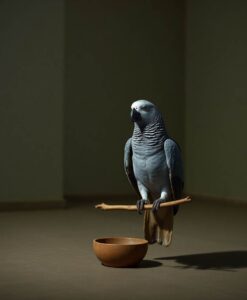Working with more than 200 referent–utterance pairs collected from Apollo’s videos, the team asks whether conceptual relations across sensory, functional, and social knowledge predict when a parrot will use a familiar word for a new object. The multimodal model captures those relations and outperforms simple explanations based on how often a sound appears or how it resembles other words. The study also links its results to classic findings from Alex, another famous grey parrot, adding independent support for the idea that comparable cognitive processes might underlie word extension across species.

This line of work matters because it reframes language learning as a window into broader cognitive organization rather than a human-only specialty. If shared principles guide how different animals map words to the world, that could reshape how we think about learning, communication, and inclusion of nonhuman minds in studies of intelligence. Follow the full article to see how these findings might expand our understanding of human potential and the boundaries of communicative cognition.
Abstract
Word meaning extension refers to the process by which a single word form develops multiple related meanings. Prior studies demonstrate that meaning extension at diverse timescales, from decades-long historical change and to month-long changes in child overextension, is accounted for by models grounded in conceptual relations across knowledge types. Whether this framework generalizes to other species remains an open question. We address this question with a probabilistic model of overextension based on various knowledge types to predict word choice of nonhuman animals. As a starting point, we compared cases of overextension from Apollo — a grey parrot who has acquired some English words — to the cases of overextension documented in child language acquisition. We apply an established model of child overextension to a novel parrot dataset of over 200 referent-utterance pairs (e.g., bead-“ball”) collected from Apollo’s YouTube channel and test whether the child model can predict parrot word choice. Our results show that Apollo’s overextension can be predicted by the multimodal model of child overextension better than baseline models that rely on frequency or sound similarity. We also find independent evidence supporting the role of different knowledge types from Alex, a grey parrot, who features prominently in prior research on animal acquisition of human language. Our findings suggest that a common model might account for the cognitive ability of word overextension identifiable in a species that diverged from humans about 320 million years ago. We discuss potential limitations and future research directions that may further strengthen the current findings.

